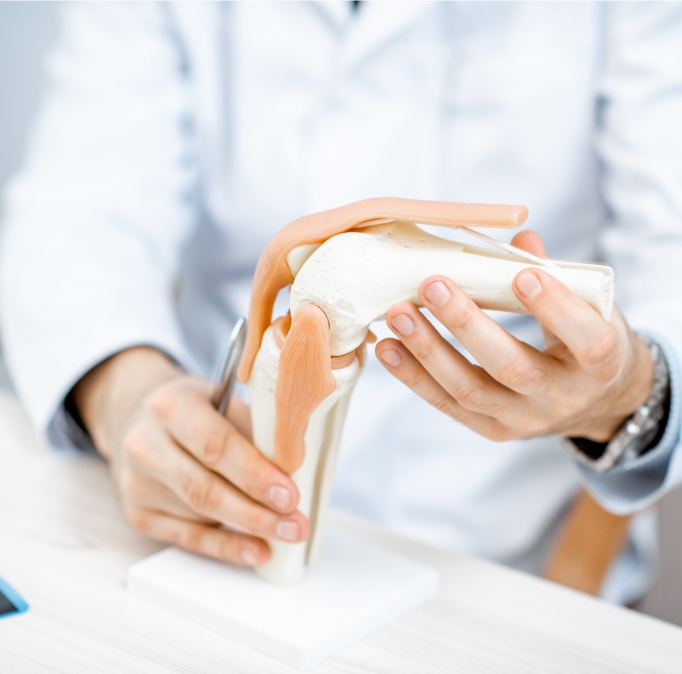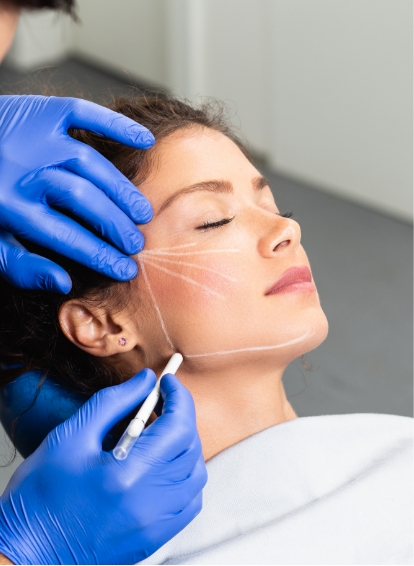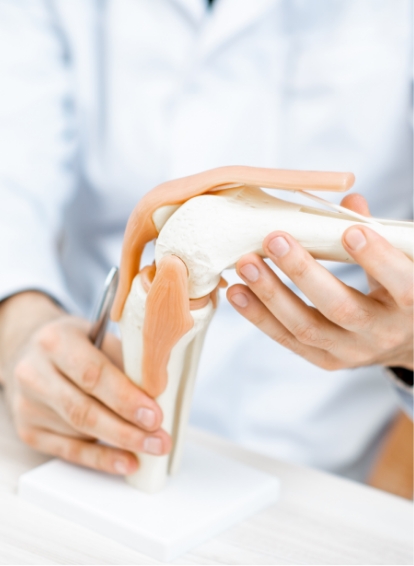Sports & Non-Surgical Orthopaedic Treatments
Osteoarthritis
Osteoarthritis is a degenerative joint disease that results from the gradual wear and tear of cartilage in the joints, causing pain, stiffness, and reduced mobility. It commonly affects the knees, hips, hands, and spine, though it can develop in any joint. Osteoarthritis typically worsens over time, impacting daily activities and quality of life.
At The Clinica, our Sports & Non-Surgical Orthopaedics team offers a range of non-invasive treatments to manage osteoarthritis symptoms, helping patients achieve pain relief, restore joint function, and improve overall mobility.

What is it?
Osteoarthritis is a form of arthritis characterised by the breakdown of cartilage, the protective tissue covering the ends of bones within a joint. Cartilage provides cushioning and allows smooth movement, but with osteoarthritis, this tissue gradually deteriorates, leading to bone-on-bone contact. This friction causes joint pain, stiffness, and swelling, which can significantly restrict mobility and function.
This condition typically develops over time and is most common in middle-aged and older adults, although younger individuals can also be affected, particularly if they have experienced previous joint injuries. Osteoarthritis progresses slowly, and as the joint damage accumulates, symptoms may become more severe, impacting one’s ability to perform everyday tasks. While osteoarthritis can affect any joint, weight-bearing joints such as the knees, hips, and spine are particularly vulnerable due to the stress they endure.
Though osteoarthritis cannot be cured, its symptoms can be managed effectively with a combination of lifestyle adjustments, medication, and targeted therapies. Early diagnosis and treatment are essential to preserving joint health and maintaining a good quality of life.
Book an appointment
Additional Information

Causes of the condition
Osteoarthritis is primarily associated with aging, as cartilage naturally wears down over time. However, other factors can contribute to its development, including joint injuries, repetitive strain, obesity, and genetic predisposition. Previous injuries, such as fractures or ligament tears, can accelerate cartilage degeneration, particularly if they alter the joint’s alignment or stability.
Repetitive movements, common in certain occupations or sports, can place stress on specific joints, leading to premature wear and tear. Obesity is a significant risk factor as well, as excess weight puts additional pressure on weight-bearing joints, increasing the likelihood of cartilage breakdown. Genetics can also play a role, as some individuals are more prone to cartilage degeneration due to inherited factors.
The combination of these factors can cause cartilage to deteriorate more quickly, leading to early-onset osteoarthritis and an increased need for effective management.
Tests that can be done to confirm the condition
Diagnosing osteoarthritis begins with a physical examination and a review of medical history to assess joint pain, stiffness, and range of motion. During the examination, your clinician may evaluate joint tenderness, swelling, and the alignment of the affected joint. Imaging tests, such as X-rays and MRI, are commonly used to confirm the diagnosis and evaluate the extent of joint damage.
X-rays can reveal typical signs of osteoarthritis, such as joint space narrowing, bone spurs, and changes in bone structure, helping to assess the severity of the condition. MRI provides detailed images of soft tissues, including cartilage, tendons, and ligaments, and can detect early signs of osteoarthritis that may not be visible on X-rays.
In some cases, blood tests may be conducted to rule out other types of arthritis, such as rheumatoid arthritis, which can cause similar symptoms but requires different treatment.
Effective treatments
Osteoarthritis treatment aims to relieve symptoms, slow disease progression, and improve joint function. Lifestyle modifications, such as maintaining a healthy weight, engaging in low-impact exercise, and following a balanced diet, can help reduce stress on affected joints and improve overall health. Exercise, particularly activities like swimming, cycling, and stretching, supports joint flexibility and strengthens surrounding muscles.
Medication is often part of osteoarthritis management, with options like non-steroidal anti-inflammatory drugs (NSAIDs) to reduce pain and inflammation. In cases of moderate to severe osteoarthritis, corticosteroid injections may be used for temporary relief from inflammation, while hyaluronic acid injections improve joint lubrication, easing movement and reducing discomfort. Platelet-rich plasma (PRP) injections, using the patient’s blood, deliver growth factors directly to the joint to promote natural healing.
Physical therapy is a core component of osteoarthritis treatment, focusing on strengthening the muscles that support the affected joint, improving stability and reducing pain. In more advanced cases where conservative treatments do not provide sufficient relief, surgical options such as joint replacement may be considered, particularly for major joints like the knee or hip.
Book an Appointment for an initial consultation
Booking an initial consultation at The Clinica is the first step in managing osteoarthritis effectively. During this consultation, our specialist will perform a thorough assessment, discuss your symptoms, and review your medical history to identify potential contributing factors. This evaluation helps form a diagnosis and determine the severity of the condition.
If necessary, imaging tests will be arranged to confirm the diagnosis and assess joint damage. Based on these findings, a personalised treatment plan will be developed to relieve symptoms, improve joint function, and support long-term joint health.
Frequently Asked Questions
While aging and genetics are unavoidable factors, lifestyle changes like maintaining a healthy weight, regular exercise, and avoiding joint strain can reduce the risk of developing osteoarthritis.
Yes, many cases of osteoarthritis can be managed effectively with non-surgical treatments, such as physical therapy, medication, and injections. Surgery is generally only considered for advanced cases.
Physical therapy strengthens the muscles around the affected joint, improving stability, reducing pain, and enhancing mobility, making it an essential part of osteoarthritis management.
Yes, corticosteroid injections are generally safe and provide targeted relief from inflammation and pain. However, they are usually recommended as part of a broader treatment plan rather than a standalone solution.
Yes, osteoarthritis can affect multiple joints, particularly those subjected to regular wear and tear, such as the knees, hips, and hands.
Specialised Clinics
General Enquiries
Please send your enquiry to us and our Practice Manager will be in touch shortly. Alternatively, if you would rather speak to us or your enquiry requires our urgent attention, please call us on 01344 946363.








